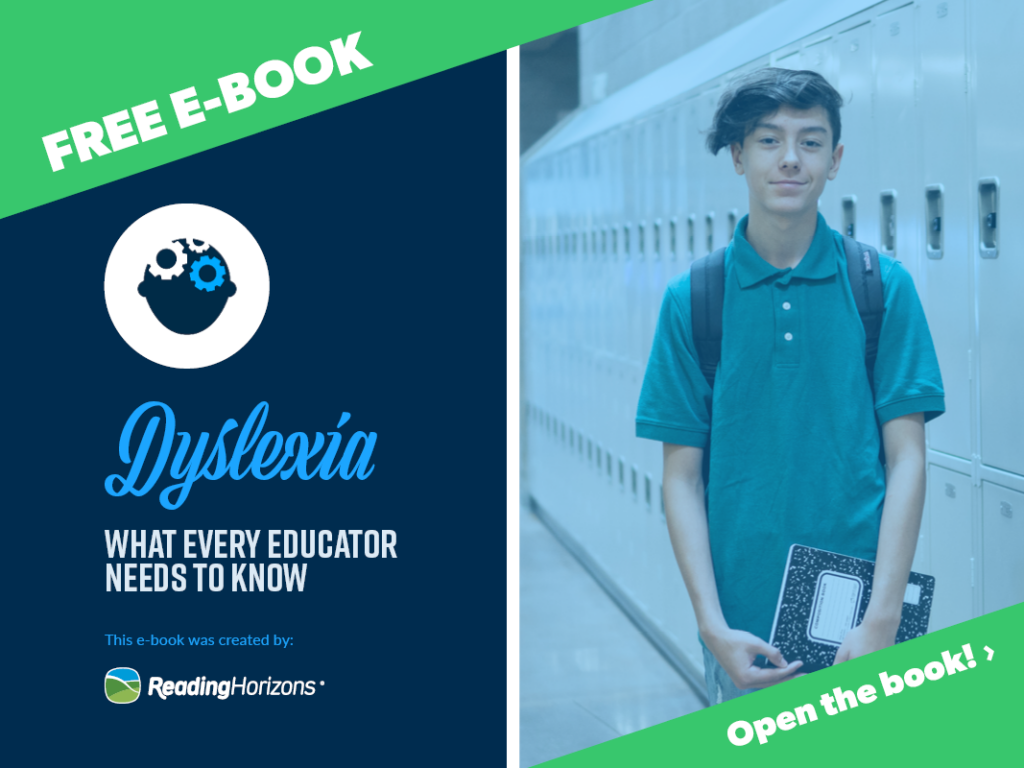
The sooner you identify which students show the signs of dyslexia, the sooner you can intervene. When remediation is conducted early and appropriately, students who demonstrate the signs of dyslexia are likely to learn to read just like their peers.
In this article, Donell Pons, M.Ed., MAT, SPED, shares the key research about the common characteristics of dyslexia and how to identify these in the classroom.
Characteristics of dyslexia
Educators, administrators, and other school personnel responsible for teaching and assessing reading need to be trained in identifying, assessing, and preventing reading challenges.
Most researchers now agree that poor phonemic awareness (PA) (the ability to identify and produce the individual sounds in spoken words) and below-average rapid automatized naming (RAN) (the time it takes a student to name digits, letters, colors, etc.) are consistent characteristics among students that struggle with reading at the word-level.
Sally Shaywitz at the Yale Center for Dyslexia and Creativity and author of Overcoming Dyslexia has a comprehensive list of recommendations to help educators and parents recognize the signs of dyslexia.
Common behaviors in the classroom
In the classroom, students with dyslexia often misspell common words (such as the days of the week or months of the year) well past their elementary school years. Reading and writing tasks will cause these students significant anxiety and lead the student to cover up their inadequacies in a variety of ways: talking excessively, taking a lot of bathroom breaks, not paying attention, using poor handwriting to cover up errors, etc.
What to do if you suspect a student has dyslexia
If an educator suspects a student has dyslexia, they can request the student be evaluated under the Child Find mandate found within The Individuals with Disabilities Education Act. This mandate states that “schools are required to locate, identify, and evaluate all children with disabilities from birth through age 22.” Identifying students who need services is an important first step. For more information about Child Find, search Wrightslaw.com or Understood.org.
Using a dyslexia screener to identify at-risk students
Using a dyslexia screener can be a helpful tool in identifying which students are at risk for dyslexia in your school or district. Richard Selznick’s book Dyslexia Screening: Essential Concepts for Schools & Parents provides a great guide for implementing a screener. In addition, here are a few key things to keep in mind when selecting and conducting a screener.
What does a screener assess?
It’s important for educators to know the difference between a screening and a diagnosis.
Screening focuses on a specific set of skills that indicate reading readiness or skills that can predict future reading success, such as phonemic awareness and letter-naming fluency, both of which are measured by DIBELS.
Diagnosis, on the other hand, focuses on gathering clinical evidence to make a clinical determination. Diagnostic tests of reading examine more complex skills, such as comprehension and cognitive processes.
Schools don’t have the authority to diagnose, but they’re still required to provide the screening to get students with reading difficulties the help they need.
Who should conduct screenings?
Because screening is not a formal diagnosis, any teacher can administer a screener and work with other professionals to interpret the results. It’s important to have individuals on the screening team who know what milestones students should reach at each stage of reading development.
Should you pay for a screener?
Whether or not a screener is free doesn’t appear to make a significant difference. What does matter is that educators use an effective screener that will show beneficial results. There are several free online dyslexia screeners that can be useful when screening students.
If a screener shows ‘yes,’ what next?
Schools need to be sure they are not only prepared to screen but ready to provide appropriate remediation (ideally a Structured Literacy reading curriculum) and routinely report back to parents.
Even if the school year has already started, screen your students. If a screener indicates that a student is likely to have dyslexia, the conversation with parents should follow the state laws governing dyslexia screening and diagnosis.
Depending on your state laws, this can be an ideal model for utilizing screener results:
After you’ve collected the results, look at the data and start remediation for the students who show the most need. As you get that group progressing, move to the next level of struggling students, working your way up from the bottom until you’ve addressed the needs of every student in your building.
By identifying students who are at risk for dyslexia, you will be prepared to answer parent concerns, target specific student needs, and boost reading outcomes at your school as you implement effective reading interventions and accommodations at your school or district.
This blog post combines insights for a series of articles written by Reading Horizons Board Member, Donell Pons. The articles were originally published in Smartbrief. View the original articles here:
Identifying students with dyslexia
How to find a dyslexia screener

